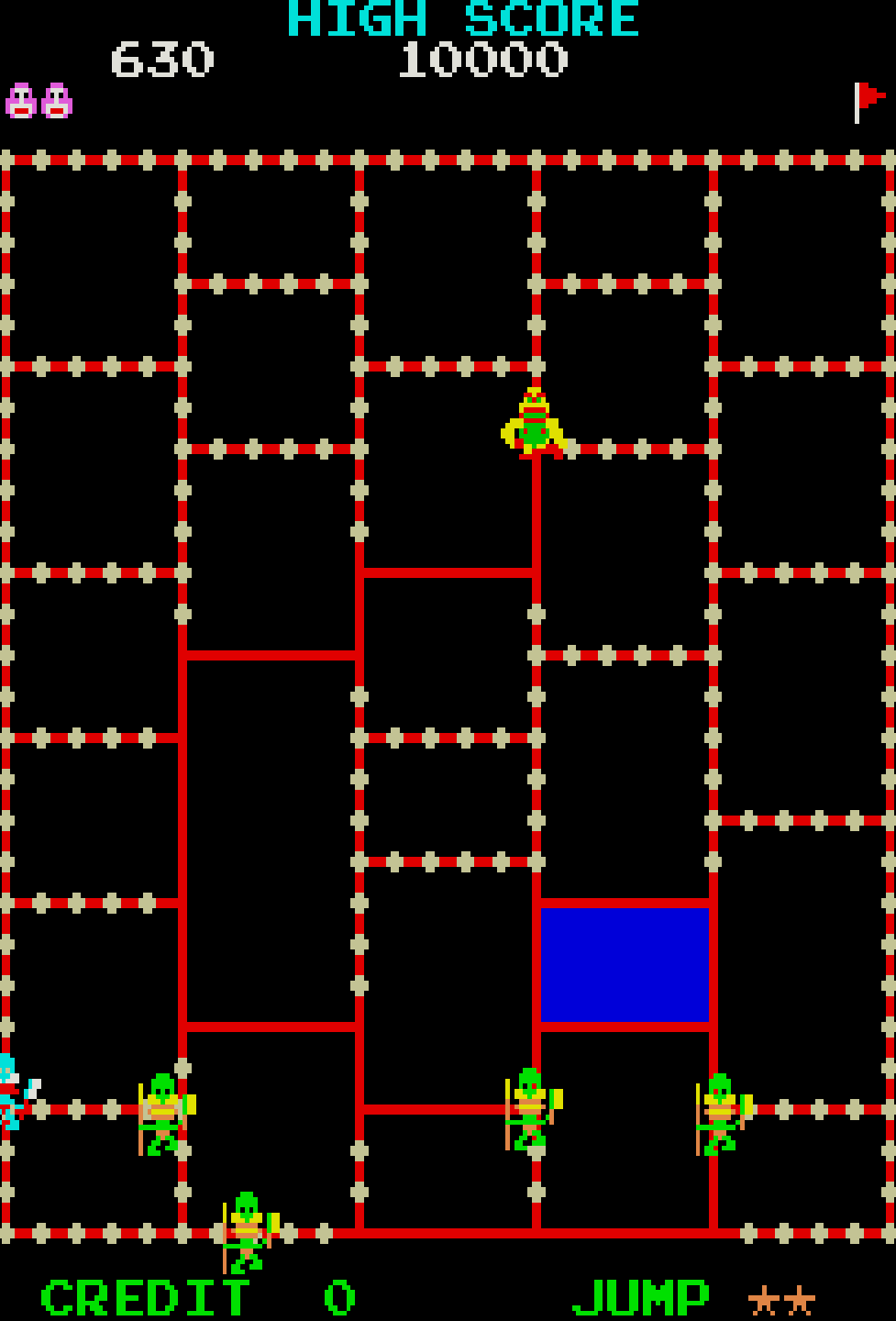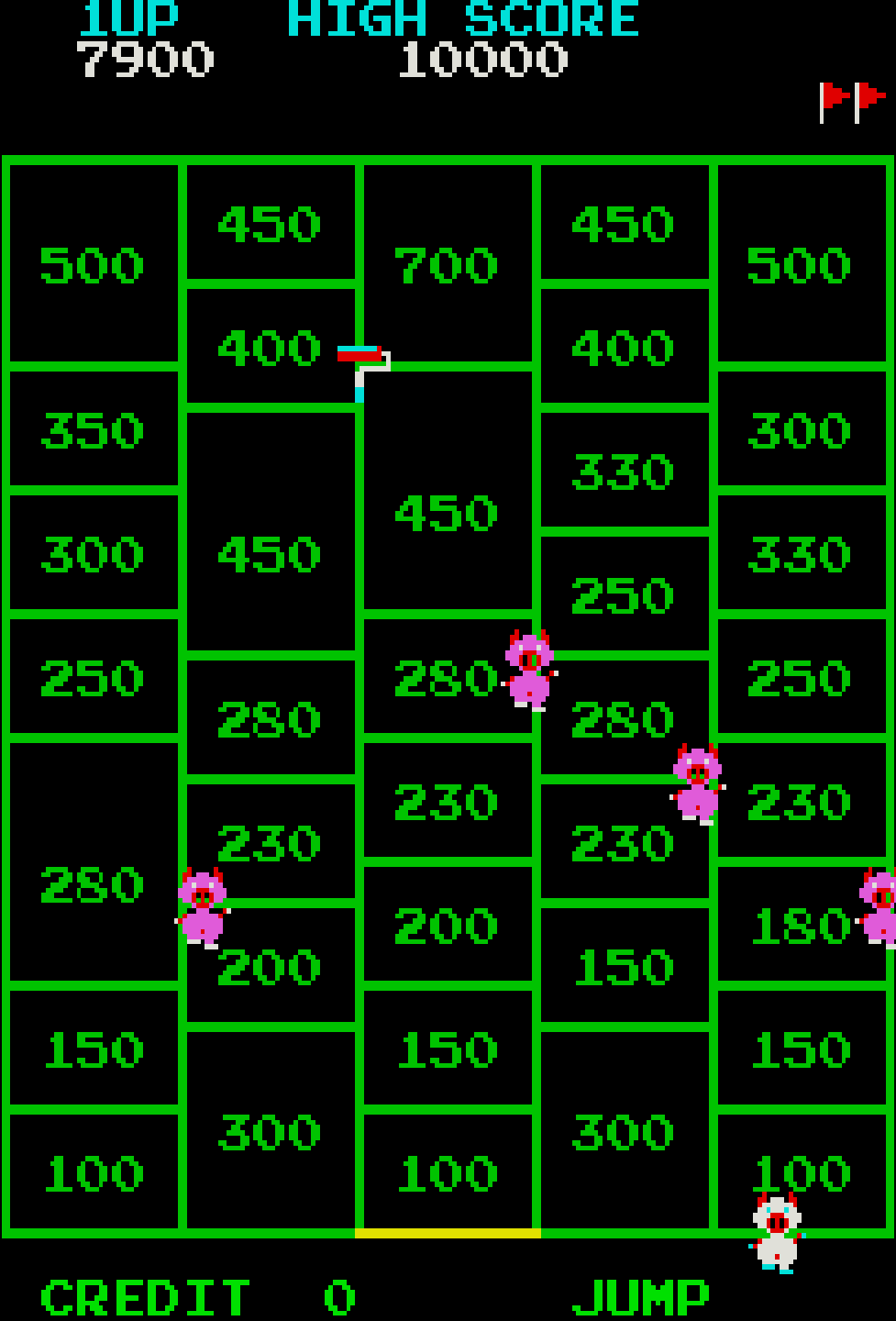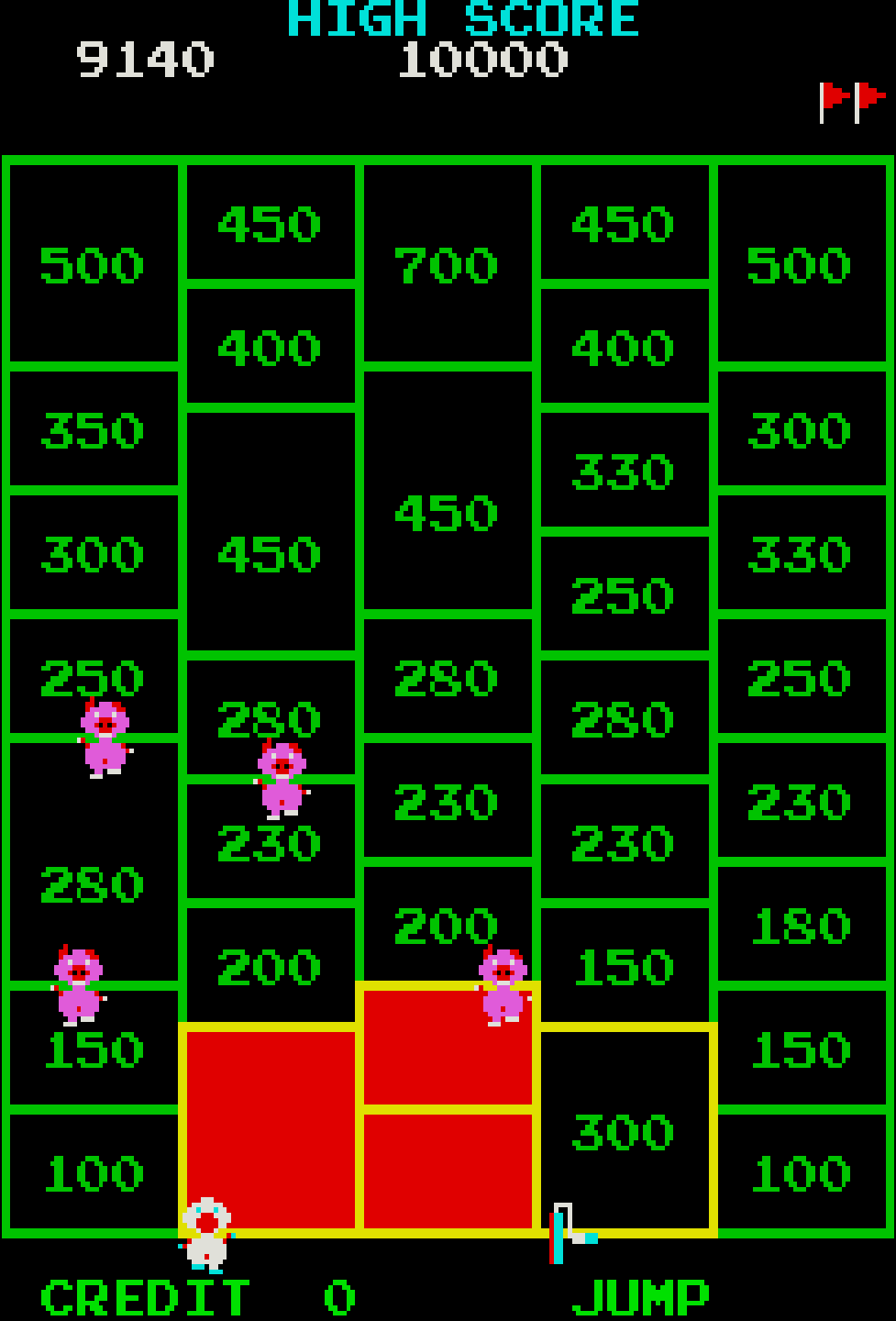Introduction
Released in 1981 by Konami and distributed by Stern in North America, Amidar is a maze-chase arcade game that introduced a clever "grid capture" mechanic. Instead of simply collecting pellets like in Pac-Man, players fill in boxes by outlining their borders, creating a unique balance of strategy, timing, and evasion. Amidar was a creative twist on the maze genre and remains a fascinating relic of the golden age of arcades.

Development and History
Konami developed Amidar during a time when the arcade world was hungry for new spins on maze games. The game introduced a system where completing squares or rectangles filled them in for points, adding a strong element of territory control. Its movement patterns, tied to predictable enemy behavior, gave it a distinctive feel compared to other maze games that relied more heavily on random enemy actions.
The game alternates between two types of stages: ones where players control a gorilla collecting coconuts and others where they control a paint roller filling in boxes.

Gameplay Video
Gameplay and Mechanics
Core Gameplay
Players must move around a grid-based maze, filling in boxes by walking the edges. Completing a full box colors it in and awards points. Each level alternates between:
- Gorilla Stages: Players collect coconuts while being chased by tribesmen.
- Paint Roller Stages: Players act as a paintbrush, filling in the entire grid while avoiding pigs.
Key gameplay features include:
- Enemy Patterns: Enemies (called "Amidars") move in predictable paths, which players must study and exploit.
- Jump Button: Limited-use jump ability lets players evade enemies temporarily.
- Capture Bonus: Filling four corners of a larger box grants bonus points.
Challenges
- Predictive Strategy: Learning enemy paths is key to survival.
- Jump Timing: Players have a limited number of jumps per stage.
- Filling Entire Grids: Later stages require quicker and more precise movement.

Cultural Impact and Legacy
While Amidar never achieved the fame of other maze games, it left an important mark:
- Original Mechanics: Introduced area capture concepts that inspired later games.
- Ports and Clones: It was ported to home systems like Atari 2600 and spawned several clones and derivatives.
- Cult Following: Retro gaming communities recognize Amidar for its unique gameplay depth.
- Konami's Early Success: Helped establish Konami’s reputation in arcades before hits like Frogger.

Fun Facts
- Title Meaning: "Amidar" doesn’t have a clear meaning; it's thought to be a made-up word for the game.
- Enemy Names: Enemies change between stages—from tribesmen to pigs, depending on the setting.
- Predictable AI: Unlike most early arcade games, enemy behavior is highly structured, not random.
- Bonus Levels: Certain versions include bonus stages where players can earn extra points.

Conclusion
Amidar blended maze navigation, enemy evasion, and strategic thinking in ways few early arcade games did. Its unique box-filling mechanic made it more than just another chase game, rewarding careful planning as much as quick reflexes. For retro fans and arcade history buffs, Amidar remains a title worth exploring.

